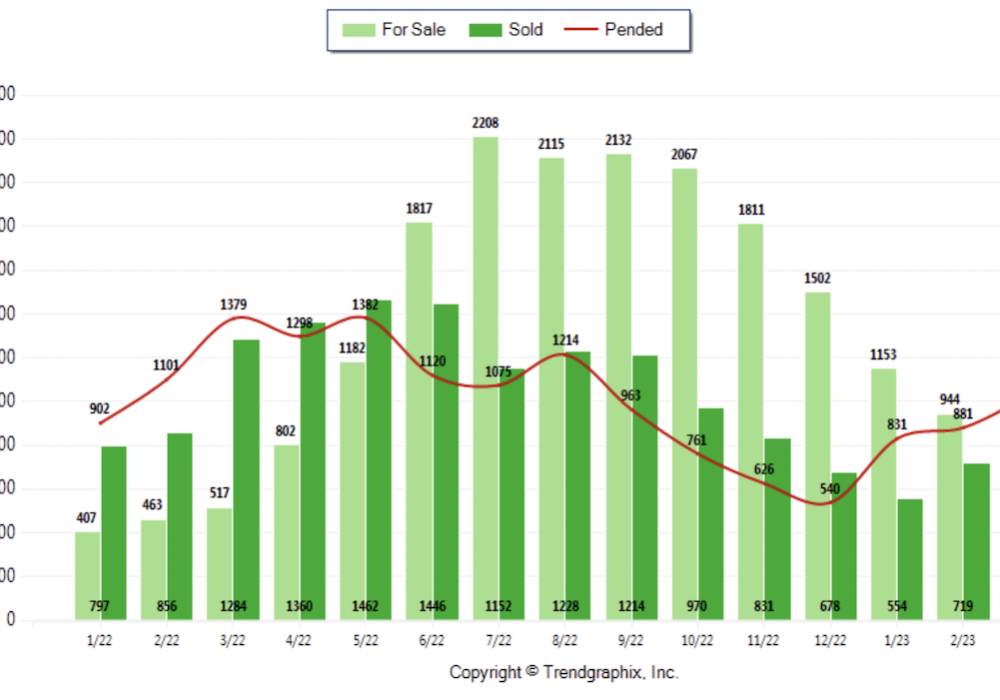The National Outlook
As the spring selling season begins, the housing market is showing signs of stabilization, with mortgage rates dropping for the fourth consecutive week. The average 30-year fixed mortgage rate has dipped to 6.28% from 6.32%, as the bank crisis continues to impact Treasury Rates. Meanwhile, the Federal Reserve raised interest rates in March in an effort to curb rapid inflation. National Association of Realtors Chief Economist Lawrence Yun anticipates that residential mortgage loans will be more readily available, despite potential difficulties in accessing commercial mortgage loans.
The first few months of 2023 have seen mixed results in the housing market. Signed contracts for existing homes increased for the third straight month in February, with growth in all regions except the West. Homebuilder confidence also rose for the third consecutive month in March, despite ongoing challenges with construction costs and supply chain disruptions. Builders report strong pent-up demand from buyers waiting for interest rates to drop and the new home market to improve due to a shortage of existing inventory.
Housing starts in February grew by 9.8% to an annualized rate of 1.45 million homes, marking the strongest pace since September 2021. Existing home sales in February also experienced a substantial increase of 14.5% to an annualized rate of 4.58 million, ending a 12-month slide. According to Yun, stronger sales gains have been observed in areas with decreasing home prices and growing local economies.
Despite a 0.5% decrease in the S&P CoreLogic Case-Shiller U.S. National Home Price index compared to the previous month, the index climbed 3.8% in January on a yearly basis. The 20-City Composite index showed a 0.6% monthly decrease and a 2.5% yearly increase. As the housing market continues to evolve, buyers and sellers will be closely monitoring trends in mortgage rates, home prices, and inventory levels.



